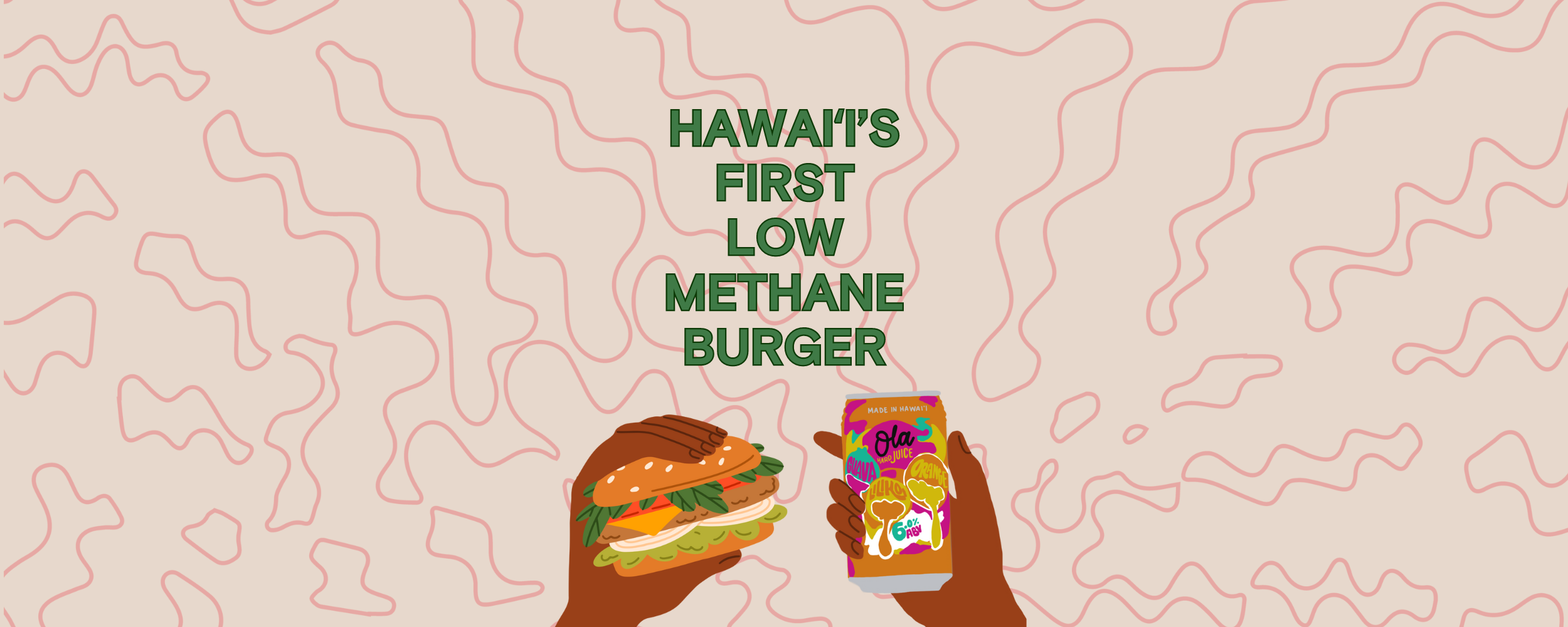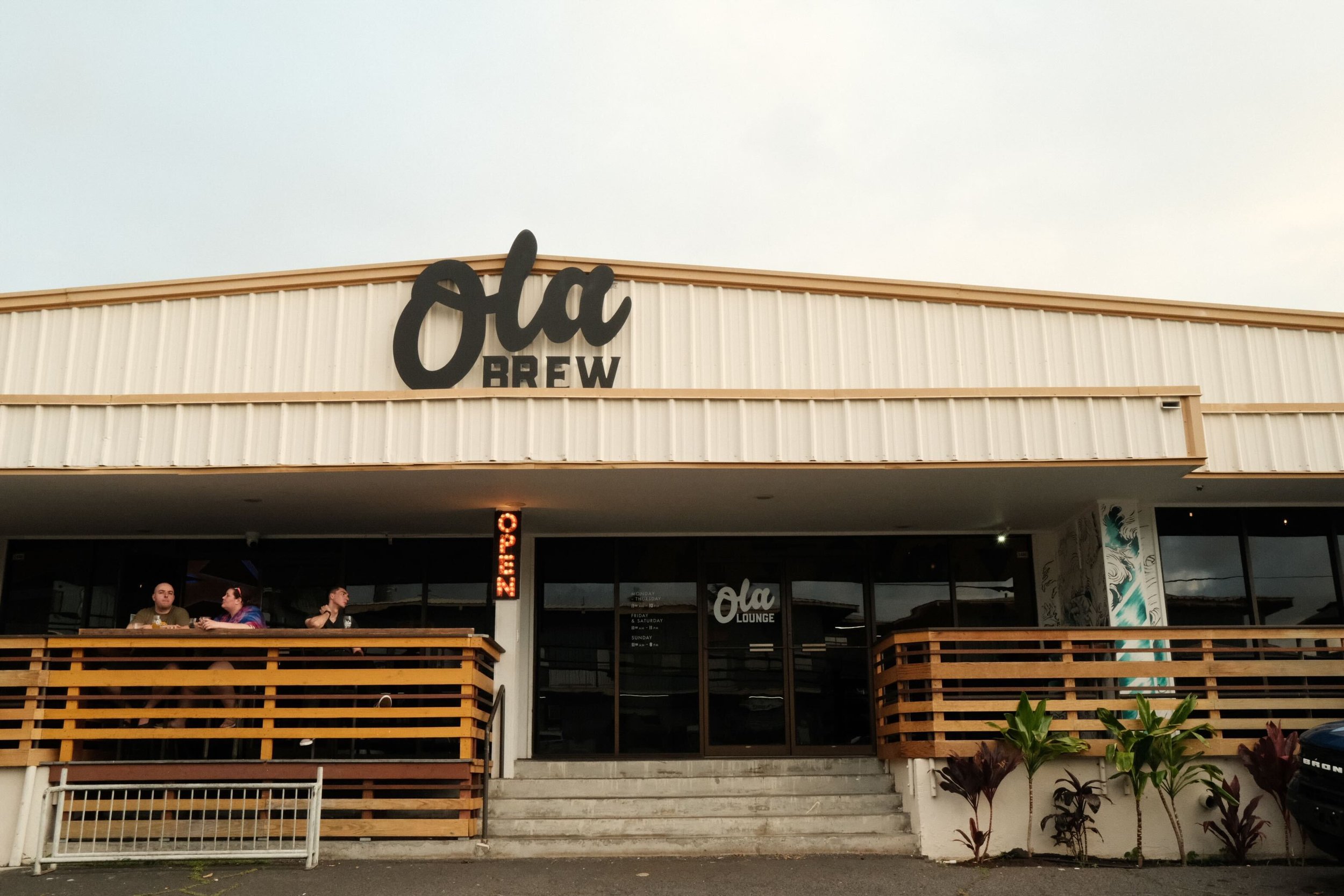The Low-Methane Burger: A Tasty Step Towards Climate Action
In a pioneering Earth Day celebration, Ola Brew introduced Symbrosia’s low-methane beef in their popular Smash Burger at their Hilo and Kona taprooms.
Featuring grass-fed beef from cows given Symbrosia’s seaweed feed-additive, this burger represents a significant step towards a more sustainable and eco-friendly food industry in Hawaiʻi. This collaboration between Symbrosia and Ola Brew showcases how local businesses can lead the way in making a positive impact on our planet.
At Symbrosia, we utilize aquaculture techniques to sustainably grow Asparagopsis Taxiformis. We transform this seaweed into SeaGraze®, a natural and organic product developed into a cattle feed additive resembling a mineral supplement. Administered in small amounts either directly into their feed or sprinkled on pasture, SeaGraze® effectively reduces livestock methane emissions by more than 80%.
Ola Brew and Symbrosia joined forces with an innovative collaboration. Together, they have launched Hawaiʻi's first low-methane burger that significantly reduces the environmental impact associated with beef production. This initiative is part of Ola Brew's broader commitment to sustainability and reflects their core mission of bolstering the local economy through support of local agriculture.
The Smash Burger — Earth Day edition was served at Ola Brew’s taprooms in Hilo and Kona, garnering positive reviews for its taste!
Why Methane?
Over a century, methane has 28 times the global warming potential as carbon dioxide. Even though carbon dioxide stays in the atmosphere for longer, methane has outsized impacts while it’s around. Climate change is time sensitive, so we’re targeting the greenhouse gas that has the biggest global warming effects in the short term.
Cows produce methane through a natural digestive process called enteric fermentation, and emit it through burps. These livestock burps account for an astounding 6% of Earth’s current warming. This means that if cows were a country, they would produce just about as much GHG as the entire European Union.
Experimental design
In a recent trial, we tested the efficacy of SeaGraze® with 6 control animals and 6 animals fed SeaGraze® at just 0.1-0.3% of their total dry matter intake. In a pasture system, the animals were fed SeaGraze® as free choice, mixed with other supplements like salt, mineral, and beet pulp.
We measured the animals’ daily methane production, feed intake and quality, total weight gain, and other factors over the trial period. We analyzed this data to better understand the benefits of SeaGraze®.
We also analyzed the quality of the control and SeaGraze®-fed beef to ensure that low methane products would be just as delicious and healthy as regular grass-fed beef and made sure that the SeaGraze®-fed beef didn’t have any residues from the different compounds in Asparagopsis taxiformis.
The low-methane burger represents a major step forward in the quest for sustainable agriculture. It's a testament to the power of innovative collaboration in tackling global environmental challenges.
By choosing this burger, consumers can enjoy a delicious meal while supporting a greener planet.






